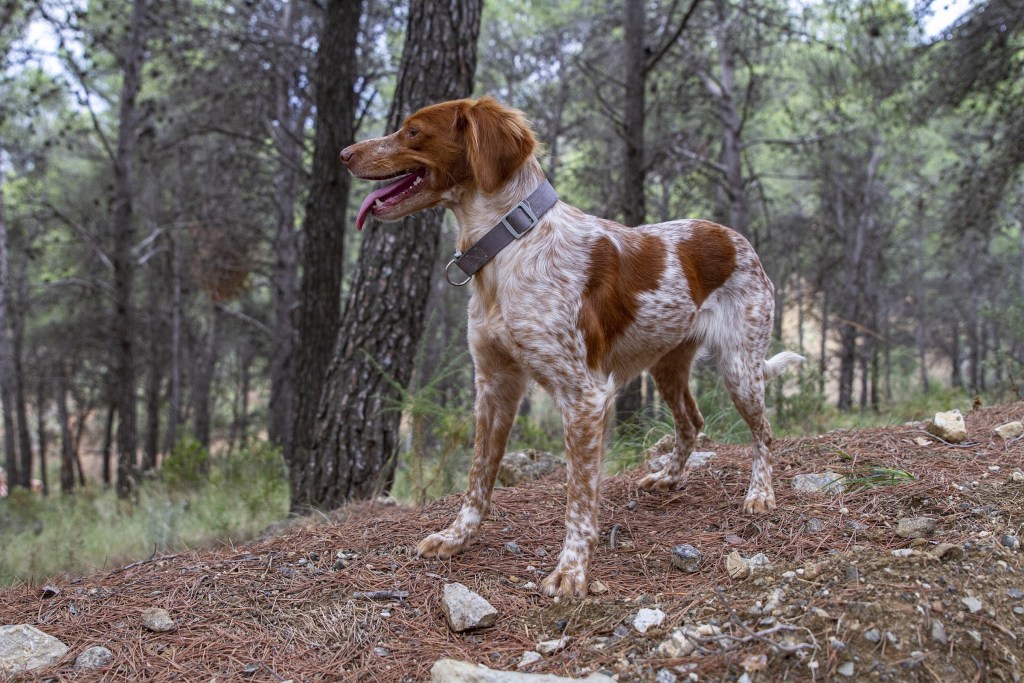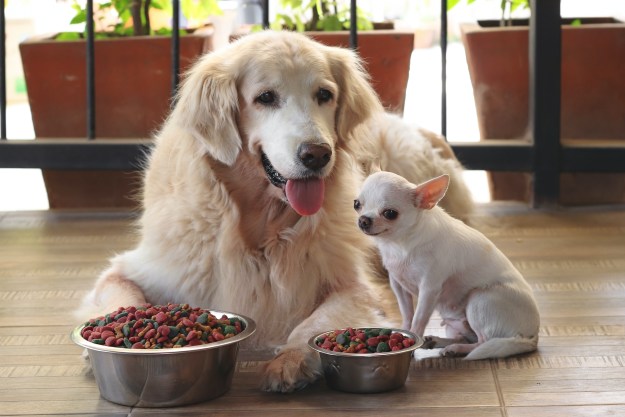Imagine taking off that too-tight shirt at the end of the day. The relief and the relaxation that comes with it — that’s how many pet parents imagine their dog feels when they get to have their collar taken off. But is it accurate?
Dog collars have been controversial as long as they’ve been around. While there’s no doubt they help keep your dog safe and identifiable, not all pet parents agree about when they should be worn. If you’ve ever wondered, “Should I take my dog’s collar off at night?” you’re in the right place. We’re here to help clear up some of the most common questions regarding your dog’s collar. Read on to learn more.
Do dogs like it when you take their collar off?
As relieving as it looks to take off your dog’s collar, not all canines will react to it with the same sense of bliss. Many dogs learn to associate their collar with going for a walk, so they’ll actually be disappointed to take it off. If your pup gets feisty when you try to remove her collar, or even her leash or harness, this may be why. It can look frustrating, but she just wants to go for a walk! Removing her collar may go a lot smoother postexercise if you have an excited, walk-loving fur baby like this.
On the other hand, many dogs aren’t fans of having anything around their neck, and while they get used to the collar over time, it still feels freeing to have it off for a while. It makes it easier to scratch those hard-to-reach spots, too! Don’t forget to give your pup a good neck massage while her collar’s off.
Not all dogs fit into these neat categories, either. Many pups are indifferent to wearing their collar, which makes things easy for their humans.

Should I take my dog’s collar off at night?
Here’s the bottom line: There are risks to keeping your dog’s collar on at night and risks to taking it off, so in the end, it’s up to your best judgment. Consider which risks are more likely given your pet’s temperament and environment while making your decision; for example, if your dog is a known escape artist or has access to a doggy door at all times, you shouldn’t take off her collar at night.
However, dogs who sleep in a crate may be more at risk for collar mishaps, like getting their ID tags stuck in the bars. Strangulation and suffocation are the biggest dangers by far, according to the Animal Behavioral College, though you will see some benefits to giving your fur baby a break from her collar. These include:
- No more collar sounds waking you up at night
- A chance for your dog’s fur and skin to breathe (this prevents matting and skin issues)
- A more restful night’s sleep for your pup
When to take off your dog’s collar
If you feel it’s safe to let your dog go collar-free overnight, this is the best time to do so. It’s always a good idea for your dog to be collared during the day when she’s active, just in case she makes an unexpected escape, but there are still plenty of times when your dog may not need to have a collar on.
Many owners will take off their pup’s collar on a supervised playdate, for example. Crate time and bedtime are appropriate for your dog to run around naked as well. It’s all about using your best judgment to provide your pup with the safety and comfort she deserves.

When to make sure your dog has a collar
Although there are times when a collar isn’t necessary, it definitely has a time and place. Collars are essential for safety when walking your dog, and they can provide identification if your dog wanders off.
Outdoor dogs should wear their collar while they’re unsupervised, as it’s a lot easier to escape when you’re already outside. A lot of doggy daycare facilities also require collars for easy control and ID, though rules vary from place to place.
If you feel unsafe leaving your dog collarless, consider purchasing a breakaway collar. These work just like regular collars, except they’re designed to break apart when pulled on, reducing the risk of choking or strangulation. You can still use breakaway collars on walks by attaching the leash through both D rings on the collar, which keeps the leash from breaking free.
Whether your dog loves or hates her collar, you’re sure to find a system that works for both of you. If it comes down to it, most dogs will get used to wearing their collar around the clock, but you’ve got ways to ensure your fur baby stays as comfortable as possible — including adjusting the collar to the perfect fit. If you feel secure enough to give your pup a break from her collar, though — especially at night — there are many reasons why it will benefit you both.
Editors' Recommendations
- 5 surefire ways to keep your dog off your bed and get a good night’s sleep
- Are ‘dog years’ really 7 human years? How to calculate your dog’s age
- Why does my dog have a bald patch on their tail? Here are the answers you need
- Looking for signs your dog has ticks? These telltale symptoms mean you have a flea or tick problem
- Xylitol is dangerous for dogs: 10 surprising products that contain it as a hidden ingredient




